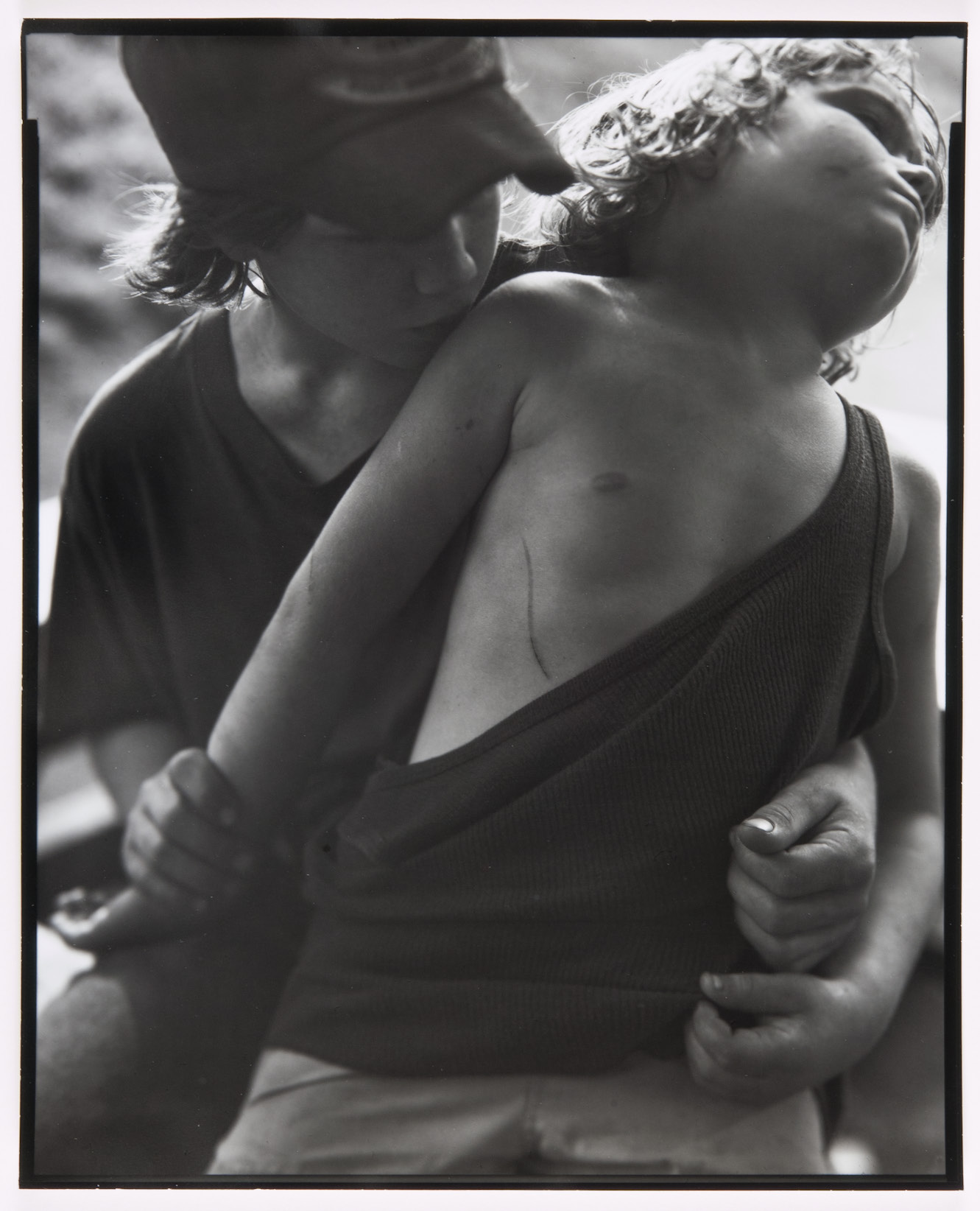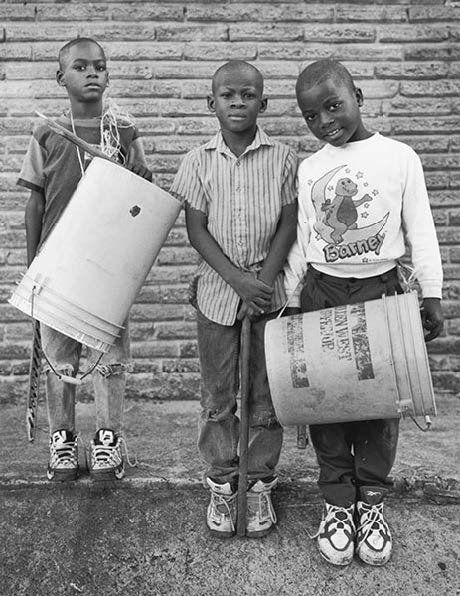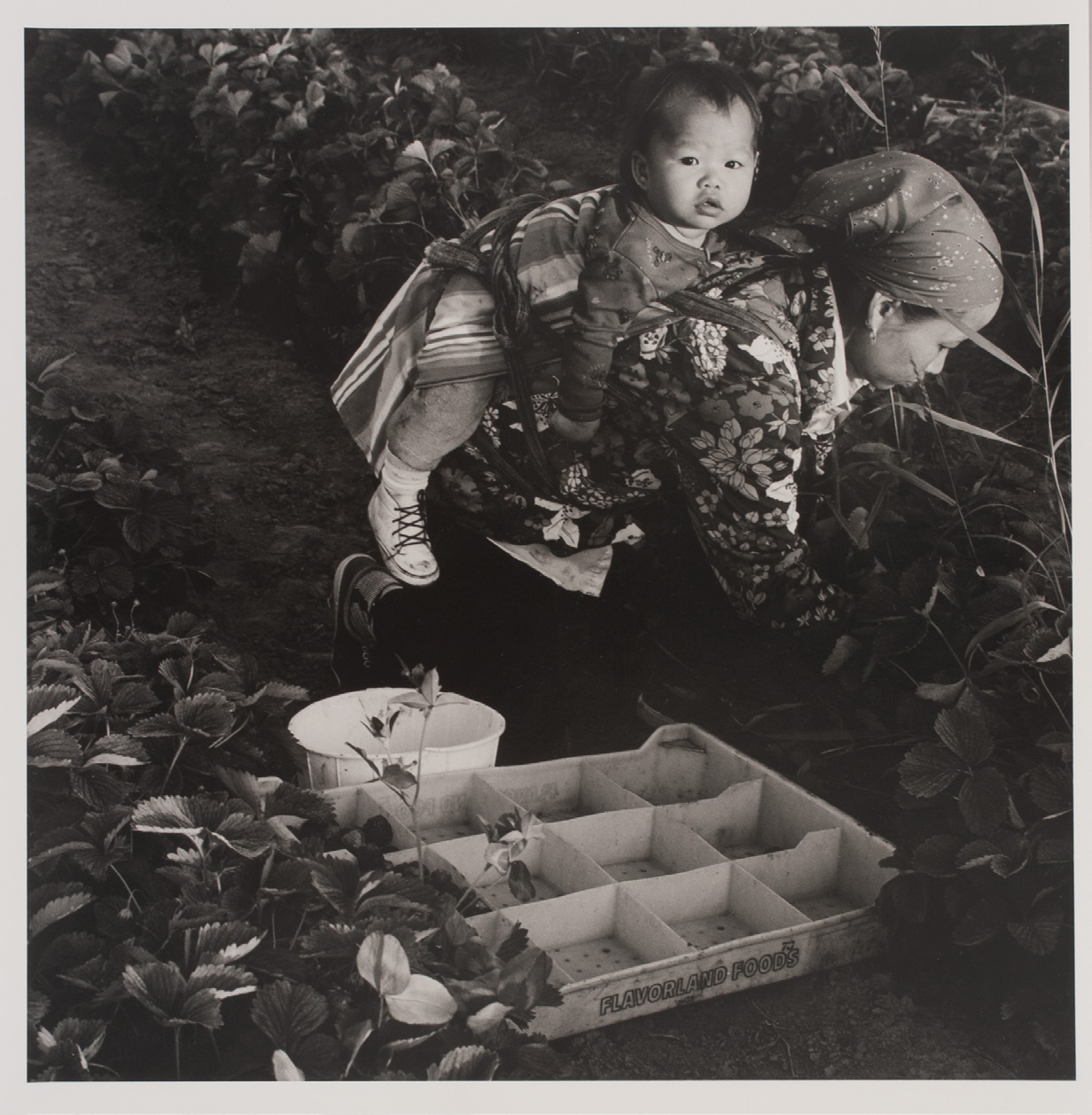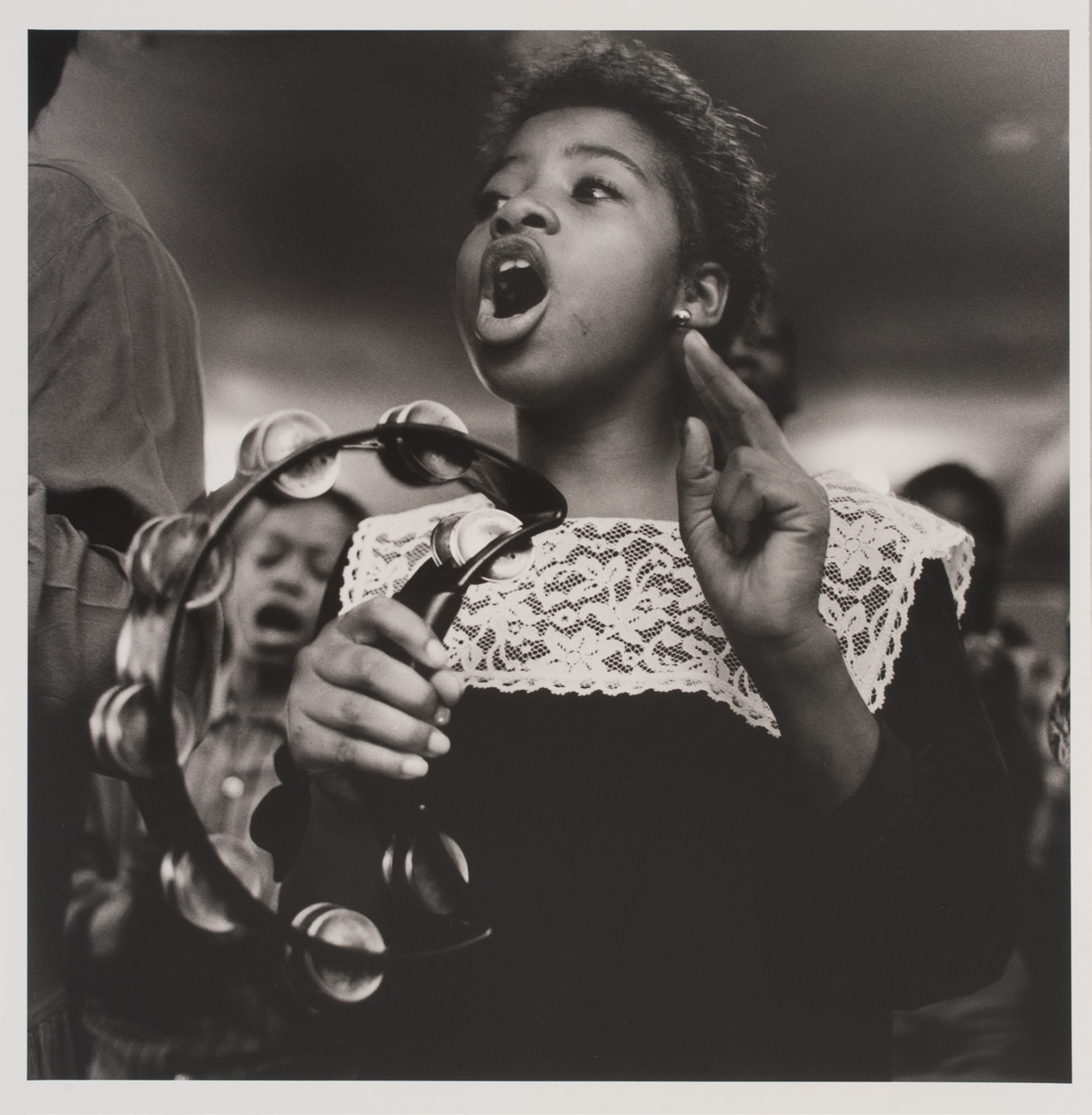Captured Innocence: The Child as Subject in Photography
A Selection of Works from the Comer Collection Curated by Tara Lyon, PhD Student
March 8 – April 15, 2023

Since the invention of photography, artists, amateurs, and advertisers alike have continually sought children as subjects in their images. Whether drawn to the aesthetic qualities of childlike beauty and cuteness, the nostalgic longing for the collective human experience, or the uncomplicated ignorance and innocence of one’s formative years, the ubiquitous focus on childhood in photography offers valuable insight into a cultural fascination with youth. This selection of pieces from the Comer Collection examines the photographer’s impulse to choose children as subjects. What do images of children represent culturally and how do nostalgia, innocence, and consent factor into our spectatorship?
“Pictures of children are at once the most common, the most sacred, and the most controversial images of our time” posits Anne Higonnet in her book Pictures of Innocence: The History and Crisis of Ideal Childhood (7). What makes childhood such a popular subject may be its ephemeral nature. The camera freezes a moment in time, preserves the moment in a symbolic stasis for further consideration. If the photograph is the most truthful, objective type of document, it is well suited to capture the transitory flashes of youth, a sentimental time of love, fun, and innocence for most. Higonnet writes, “because cameras recorded a moment — ever more rapid as camera equipment was developed—photography seemed exactly the right medium to seize a childhood whose poignancy had been equated with its fleeting evanescence. The identification of childhood with photography became a self-fulfilling prophecy” (301). Cameras became a tool of not only memory documentation but also a perpetuator of the notion of the ideal childhood and childhood innocence.
The concept of ideal childhood and the broader notion of innocence is a newer concept appearing in the modern era of the west around the seventeenth century (Higonnet 8). Prior to the seventeenth century, children were seen only as adults in training, depicted in Western imagery as smaller in reference to their adult counterparts, but otherwise proportioned and dressed as adults. They lacked the innocence and purity we now associate with children in these portrayals. They lacked cuteness. In the introduction to cultural theorist, Sianne Ngai’s anthology titled The Cute, cuteness is defined as “an aesthetic ‘of’ or ‘about’ minorness — or what is generally perceived to be diminutive, subordinate, trivial, and above all, unthreatening” (12). These signifiers of aesthetic cuteness become markers for innocence and purity in illustrations of children starting in the 17th century. There are obvious evolutionary advantages to explain the human response to the cute. In the British Journal of Aesthetics, John Morreall writes, “the need to have adults find them appealing, and so take care of them, exists in all young mammals, but is by far the greatest in human babies, who are the most helpless creatures on earth” (29). We live and die by our cuteness. This cuteness gives humans value and the right to survive and the “cute” depictions of childhood created a notion of the ideal, innocent child.
Higonnet writes, in the Routledge History of Childhood in the Western World, that British portraits of the mid-18th century “introduced the vision of a disembodied childhood, a cute childhood, a miniaturized childhood … posed in compositional harmony with landscapes and harmless animals, with wide sparkling eyes and limpidly calm faces, they were painted as emblems of innocence” (298). These types of images became so popular throughout the 19th and early 20th centuries that they were mass reproduced and established the notion of childhood innocence. (Higonnet 298). Carrying on these depictions of ideal childhood into the medium of photography were a number of early photographers including Lewis Carroll (Charles Lutwidge Dodgson) and Julia Margaret Cameron. Their picturesque depictions of childhood were romanticized with beautiful, flawless children. Similar images of ideal childhood are perpetuated today on social media, advertising, and other forms of mass-media. But this image of innocence would be challenged. Higonnet writes, “because the ‘normal’ image of the child was Romantic innocence, any sign of deviation from innocence could be understood as violation. Signs of want, of brutality, of labor, of filth, of sexuality, of any physical or emotional trauma, would appear as a forced, social ban from natural innocence” (Higonnet 117). These types of deviations from the more common depictions of childhood innocence become artistic statements. Such statements are evident in this exhibition.
The contrasts between ideal childhood innocence and hardship create opposing tensions within many of the selected pieces. For example, in Andrea Modica’s piece, Treadwell, New York, the children are posed in an embrace reminiscent of the Renaissance. The shallow depth of field leaves the majority of the frame in a soft focus to match the soft lighting. These are the typical building blocks for creating a picture of idealized, innocent children. But Modica infuses compelling contradictions. Half of the chest of the child in the foreground is exposed to reveal a large, superficial scratch. The children are dirty; there is grime on their clothing and skin. The child in the background is wearing a hat that shows a great deal of age and wear, particularly in its rounded brim. The children look unhappy and the tight framing leaves nothing to reference except their discomfort. They are locked into this existence. Modica is directly commenting on ideal childhood and notions of innocence with this work.

Another photograph that employs similar devices to create contrast and tension is Harold Feinstein’s Child & Carousel Ride. In the foreground, a child’s gaze is returned from the bottom right of the frame. Again, the face of the child is dirty and her look is skeptical. Racing across the frame behind her is another child on a carousel horse, a blur compared to the sharp focus of the subject child. The two children are moving at different speeds as recorded in the frame. One is fixed and in focus while the other is moving and blurred. The child on the carousel horse seems to be traveling across the picture plane to trample the other child as she stops to look. The world around her keeps moving. The child subject is missing the fun, she is dirty, and she is static. She doesn’t portray the innocence of ideal childhood. Instead, the photograph comments on the temporality of childhood, lost opportunities, and envy.

Selections included in this exhibition also complicate notions of innocence and ideal childhood by referencing pre-17th century notions of children as miniature adults with their placement in adult spaces or performing adult roles. Ken Light’s Laotian Family Strawberry Harvest, $1.50 a flat, Hillsboro, Oregon, 1982 depicts a woman working in a field on her hands and knees with a baby strapped to her back. The baby addresses the spectator through their gaze from an alert head position as their limbs fall limply due to the force of gravity. The mother busies herself with her work and doesn’t address the camera. The baby is at the mercy of the mother, held tight by a series of intricate straps. The child is literally stuck to the mother who is stuck in this extremely difficult occupation. The form of the child is balanced in the frame by the form of the empty fruit flats. Filling the flats to provide for and fill the stomach of the infant, the mother is trapped in the middle. The child is already a part of the workforce and is therefore missing an ideal childhood.
Ken Light presents another child in an adult world with Sunday Service, Faith Temple Word of Faith, Tutwiler, Mississippi, 1990. This photo depicts a child engrossed in song with mouth open and tambourine at the ready. She is wearing a black dress with a delicate lace collar and is looking upward as she sings. In the background and framed within the tambourine is another child, singing with eyes closed. Although flanked by other, presumed adult figures, the tight framing focuses the attention on the girl subject. The girl is photographed at an upward angle to match her eye-line and tilted head. She is made to look taller among these adults, to aspire to be one of the adults. She is a child playing at being a grownup. She is depicted, much like the pre-17th century children, as a smaller adult instead of being differentiated as a “cute” child.

The photographs in this exhibition create varied notions of childhood. Many of the children in these photographs are performing specific roles. They are participating in the labor of their parents, they are imagining themselves in adult gender roles, they are at play, making the best out of the world they inherit. Each of the photos portrays a version of childhood, regardless of whether we as spectators can identify or recognize it. Higonnet writes, “we look nostalgically at photographs of children, remembering through each child a collective childhood, a vision of hope and boundless possibility” (302). This collective childhood is demonstrated in the photographs presented here. Higonnet writes, “photographic images of children have saturated our consciousness. Do we remember our childhoods, or photographs of our childhood?” (301). Or do we see ourselves in the photographs of others? The pieces in this exhibition both display and confront the notion of childhood innocence. This exhibition asks you, as the spectator, to question this impulse to photograph children while also appreciating the ways that each artist expresses and complicates what childhood symbolizes culturally.
—Tara Lyon, PhD Student, March 2023
Works Cited
- Higonnet, Anne. “Picturing Childhood in the Modern West.”
The Routledge History of Childhood in the Western World, Ed. Fass, Paula S., Taylor & Francis Group, 2012. 296-312. - Higonnet, Anne. Pictures of Innocence: The History and Crisis of Ideal Childhood. Thames and Hudson, 1998.
- Morreall, John. “Cuteness.” British Journal of Aesthetics, vol. 31, no. 1, 1991. 39-47, https://doi.org/10.1093/bjaesthetics/31.1.39
- Ngai, Sianne, ed. The Cute . Whitechapel Gallery, 2022.